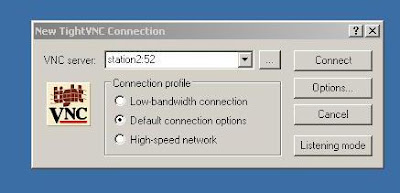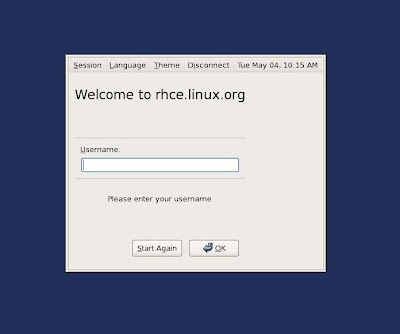This installation will describe DRBD with Primary and Secondary nodes including virtual IP (Floating IP)
You can find 192.168.1.200
Node1(Primary node)
eth0 192.168.1.201
eth1 10.0.0.201 (For drbd)
Node2 (Secondary node)
eth0 192.168.1.202
eth1 10.0.0.202 (For drbd)
add node details in /etc/hosts file, in both nodes
10.0.0.201 node1
10.0.0.202 node2
Install on both nodes
yum install drbd83 kmod-drbd83 heartbeat heartbeat-devel heartbeat-ldirectord
configure drbd.conf file in /etc on both nodes "data" is resource name. You can put what ever name you prefer. Put this file in both nodes,
global { usage-count no; }
resource data {
protocol C;
startup { wfc-timeout 0; degr-wfc-timeout 120; }
disk { on-io-error detach; } # or panic, ...
net { cram-hmac-alg "sha1"; shared-secret "Cent0Sru!3z"; } # don't forget to choose a secret for auth !
syncer { rate 10M; }
on node1 {
device /dev/drbd0;
disk /dev/sda3;
address 10.0.0.201:7788;
meta-disk internal;
}
on node2 {
device /dev/drbd0;
disk /dev/sda3;
address 10.0.0.202:7788;
meta-disk internal;
}
}
Initialize the meta-data area on disk before starting drbd. Run this command in both nodes.
drbdadm create-md data
Out put will be like this
md_offset 419483648
al_offset 419450880
bm_offset 419434496
Found ext3 filesystem
409601 kB data area apparently used
409604 kB left usable by current configuration
Even though it looks like this would place the new meta data into
unused space, you still need to confirm, as this is only a guess.
Do you want to proceed?
[need to type 'yes' to confirm] yes
Writing meta data...
initializing activity log
NOT initialized bitmap
New drbd meta data block successfully created.
Now you successfully created meta data.
Now stat drbd service in both nodes
service drbd start
Problem and solutions
Sometimes if your /dev/sda... (Your device file) if already mount this cause problem. Please make sure you unmount that device and add comment on /etc/fstab file. Other wise when PC reboot this /dev/sda will check for errors and sometimes PC is not boot up.
Starting DRBD resources: [
data
Found valid meta data in the expected location, 419483648 bytes into /dev/sda3.
d(data) 0: Failure: (114) Lower device is already claimed. This usually means it is mounted.
[data] cmd /sbin/drbdsetup 0 disk /dev/sda3 /dev/sda3 internal --set-defaults --create-device --on-io-error=detach failed - continuing!
s(data) n(data) ].
umount /dev/sda3
Comment your disk resource from /etc/fstab also.
Now try to start drbd service. If it's still gives you errors just reboot the both nodes. After reboot complete try with drbd status
[root@node1 ~]# cat /proc/drbd
version: 8.3.8 (api:88/proto:86-94)
GIT-hash: d78846e52224fd00562f7c225bcc25b2d422321d build by mockbuild@builder10.centos.org, 2010-06-04 08:04:16
0: cs:Connected ro:Secondary/Secondary ds:Inconsistent/Inconsistent C r----
ns:0 nr:0 dw:0 dr:0 al:0 bm:0 lo:0 pe:0 ua:0 ap:0 ep:1 wo:b oos:409604
Type this on primary node that you decide. In this case node1
drbdadm -- --overwrite-data-of-peer primary data
Check for the device sync
watch cat /proc/drbd
Once sync is complete you can mound /dev/drbd0
mkfs.ext3 /dev/drbd0
mke2fs 1.39 (29-May-2006)
warning: 3 blocks unused.
Filesystem label=
OS type: Linux
Block size=1024 (log=0)
Fragment size=1024 (log=0)
102800 inodes, 409601 blocks
20480 blocks (5.00%) reserved for the super user
First data block=1
Maximum filesystem blocks=67633152
50 block groups
8192 blocks per group, 8192 fragments per group
2056 inodes per group
Superblock backups stored on blocks:
8193, 24577, 40961, 57345, 73729, 204801, 221185, 401409
Writing inode tables: done
Creating journal (8192 blocks): done
Writing superblocks and filesystem accounting information: done
This filesystem will be automatically checked every 25 mounts or
180 days, whichever comes first. Use tune2fs -c or -i to override.
mkdir /u
mount /dev/drbd0 /u
You can create test file and check.
for i in {1..5};do dd if=/dev/zero of=/u/file$i bs=1M count=10;done
Now for the node2 configuration you need to umount /u and set disk as secondary in node1
umount /u
drbdadm secondary data
Here you can see now node1 also as Secondary
watch -n 1 cat /proc/drbd
Every 1.0s: cat /proc/drbd Tue Aug 23 11:21:49 2011
version: 8.3.8 (api:88/proto:86-94)
GIT-hash: d78846e52224fd00562f7c225bcc25b2d422321d build by mockbuild@builder10.centos.org, 2010-06-04 08:04:16
0: cs:Connected ro:Secondary/Secondary ds:UpToDate/UpToDate C r----
ns:482866 nr:0 dw:73262 dr:424875 al:60 bm:30 lo:0 pe:0 ua:0 ap:0 ep:1 wo:b oos:0
Now In node2 you can create /u folder and mount dev/drbd0
drbdadm primary data
mkdir /u
mount /dev/drbd0 /u
Delete files that create previously and add new files.
unmount from the node2 and set drbd as secondary
Goto node1 and set that as primary and mount. You can see all the files that we create from node2.
Now drbd is ok
add it to start up on both nodes
chkconfig drbd on
Configure heart beat.
goto node1 and /etc/ha.d
touch ha.cf
Add followings
logfile /var/log/ha-log
logfacility local0
keepalive 2
deadtime 30
initdead 120
bcast eth0
udpport 694
auto_failback on
node node1
node node2
crm no
touch authkeys
Add following
auth 1
1 sha1 MySecret
set permission on authkey
chmod 600 authkeys
touch haresources
In haresources add the Primary node , Floating IP and the services that you need to monitor through heartbeat (here httpd and smb) 192.168.1.200 mean floating IP.
node1 IPaddr::192.168.1.200 drbddisk::data Filesystem::/dev/drbd0::/u::ext3 httpd smb
Stop httpd and smb services in the both nodes. Because heartbeat will start the process and do the fail over part.
chkconfig httpd off
chkconfig smb off
Add heartbeat service to startup in both nodes.
chkconfig heartbeat on
Any issue with split brain ?
When it's come to split brain there are 02 node we can identified.
1. Split brain victim
2. Split brain survivor
Select on of your node and type,
drbdadm secondary data <----------------------------- Now this node act as victim
This issue can be solved,
1. To perform command this way to pass this option directly to drbdsetup: (EASY WAY) Select one node and set it as secondary.
drbdadm secondary data
drbdadm -- --discard-my-data connect data
Now go to other node (Split brain survivor) and type
drbdadm connect data
Now check on both node and it become normal status
http://wiki.centos.org/HowTos/Ha-Drbd
http://www.drbd.org/users-guide/ch-rhcs.html
http://supportex.net/2011/07/drbd-split-brain-solution-primaryprimary-setup/
http://almamunbd.wordpress.com/2009/05/28/how-to-configure-mysql-high-availability-with-drbd-and-heartbeat/




















